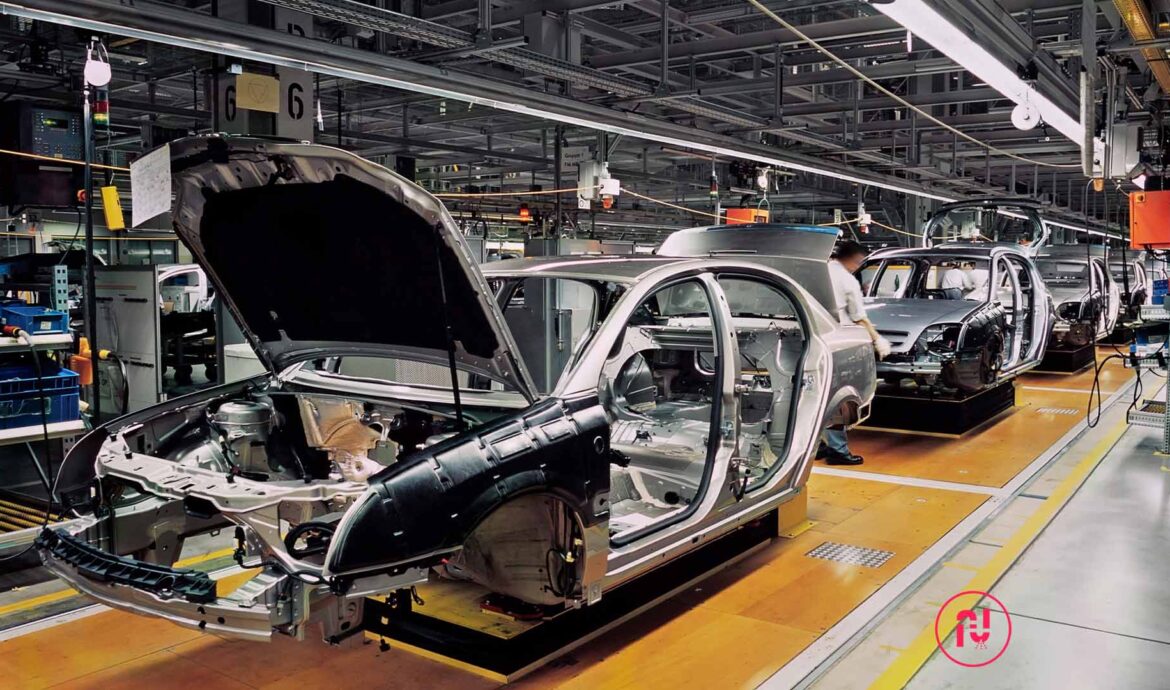The automotive industry operates within a complex ecosystem composed of various players involved in the design, manufacturing, distribution, and maintenance of vehicles. From original equipment manufacturers (OEMs) to Tier 1 suppliers, dealerships, and service providers, each entity plays a crucial role in the full cycle of automotive production and consumption.
This intricate network encompasses companies that develop cutting-edge technologies, produce components and systems, assemble vehicles, distribute them to dealerships, and ultimately provide maintenance and repair services.
Automotive Value Chain
Here we will discuss the simplified version of the 9 key players in the automotive industry hierarchy.
1. OEM (Original Equipment Manufacturer)
These are the top-level companies in the automotive industry hierarchy. These companies design manufacture and sell vehicles under their own brand names, including cars, trucks, motorcycles, and more. Examples include Toyota, General Motors, Volkswagen, Ford, JLR and BMW.
2. Tier 1 Suppliers
Tier 1 suppliers are major components manufacturers that supply systems and sub-systems directly to OEMs. They supply items like engines, transmissions, electronics, chassis systems, and more. They have direct contract with OEMs and play a critical role in the production of vehicles. Tier 1 suppliers often have engineering capabilities and may have multiple manufacturing facilities worldwide. Some prominent Tier 1 suppliers are Bosch, Magna international, Continental AG, and Denso Corporation.
3. Tier 2 Suppliers
Tier 2 suppliers provide components and parts to Tier 1 suppliers. They specialize in producing specific parts or systems that are then integrated into the Tier 1 suppliers’ products such as fuel systems, seating systems, or braking systems. They often work closely with Tier 1 suppliers to meet their specifications and requirements. Examples of Tier 2 suppliers include Lear Corporation, ZF Friedrichshafen AG, and Delphi Technologies.
4. Tier 3 Suppliers
Tier 3 suppliers are typically smaller companies that supply individual parts or raw materials to Tier 2 suppliers. They produce items Plastic components such as interior trim parts and exterior body panels, fasteners like nuts and bolts, or small electronic components like wiring harnesses, connectors, or switches. Tier 3 suppliers play a crucial role in the supply chain, providing essential components to produce automotive parts. Some examples of Tier 3 suppliers include Faurecia, Stanley Black & Decker, LISI Automotive, Yazaki corporation TE connectivity, Cooper Standard, Saint-Gobain, Henkel AG & Co.
5. Distributors and Wholesalers
They are responsible for managing the distribution and logistics of automotive components and parts. They play a crucial role by managing the flow of components and parts from suppliers to Manufacturers or retailers. These entities ensure timely delivery, inventory management, and efficient supply chain operations.
6. Dealerships
Dealerships are authorized retailers that sell new vehicles to consumers on behalf of OEMs. They also provide aftersales services, such as maintenance and repairs.
7. Independent repair shops
These are independent businesses that specialize in repairing and servicing vehicles. They are not affiliated with any OEM and often cater to a wide range of vehicle makes and models.
8. Parts Manufacturers
These companies produce aftermarket parts that can be used for vehicle repairs or customization. Examples include companies like Monroe, ACDelco, and NGK Spark Plugs.
9. Retailers
Retailers, such as auto parts stores, online platforms, and specialized retailers, sell aftermarket parts and accessories directly to consumers.
Automotive industry players collaborate to shape the automotive landscape, driving innovation and meeting the demands of a dynamic and evolving market. As technology advances and consumer preferences change, the automotive industry continues to adapt and evolve, driven by the collective contributions of its diverse players. By navigating the complexities these entities ensure the continued growth and success of the industry in meeting the transportation needs of individuals and societies as a whole.
Disclaimer: The information provided in this blog post is based on personal research I have been doing for a project on a specific market segment. Please note the Automotive industry’s full cycle of players may vary depending upon the region, market segment, and specific industry dynamics.
Thanks for reading! If you enjoyed this post, be sure to check out my blog http://ujaike.com/blog/ for more articles like this one. you can also connect with me on social media for more contents and updates.
Many thanks for your support!

